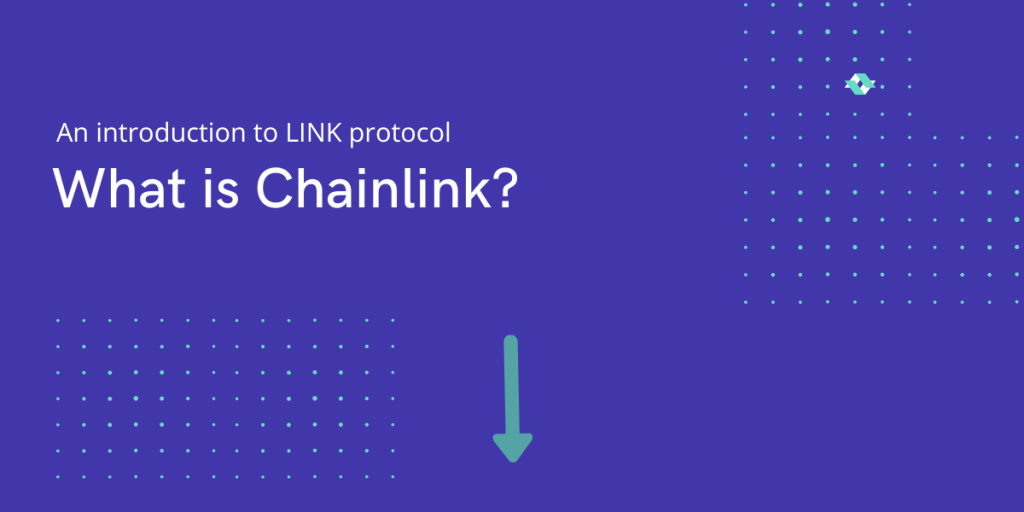Chainlink is a cryptocurrency and decentralized oracle network that provides reliable, tamper-proof data and inputs to smart contracts on the Ethereum blockchain. It is now one of the most popular and widely used decentralized applications (dApps).
In this article, let’s take a look at what Chainlink is, how it works, and what are some of the reasons why companies are leveraging chainlink for their smart contract deployment.
What is Chainlink (LINK)?
Chainlink is a decentralized oracle network that provides secure, reliable data to smart contracts on the Ethereum blockchain. By connecting real-world data to the blockchain, Chainlink allows smart contracts to interact with external data sources, making them more useful and practical.
Chainlink was created by Sergey Nazarov and Steve Ellis in 2014. The Chainlink network is made up of nodes, which are run by decentralized node operators. These operators are rewarded with LINK tokens for providing data to the network. The Chainlink network is designed to be highly secure and resilient.
It uses a Proof-of-Stake consensus mechanism, which means that node operators can stake their LINK tokens to validate data and earn rewards. The Chainlink network is also decentralized, meaning that there is no single point of failure. The Chainlink network is constantly growing, with new nodes and operators being added all the time.
This growth is fueled by the LINK token, which is used to pay node operators for their services. As the Chainlink network grows, so does its ability to provide accurate and secure data to smart contracts.
Origin of Chainlink
The origins of Chainlink can be traced back to Sergey Nazarov, who was working on a project called SmartContract in 2014. SmartContract was a platform that allowed users to create and execute contracts using blockchain technology. However, the platform was not able to connect to real-world data, which limited its usefulness.
In order to solve this problem, Sergey and his team created Chainlink, a network that connects blockchain-based smart contracts to real-world data. The Chainlink network is made up of a network of nodes, which are run by independent operators.
These operators are responsible for providing accurate data to the smart contracts. The Chainlink network has been operational since 2015 and is currently used by a number of major organizations, including Google, Oracle, and SWIFT.
How does Chainlink work?
Chainlink is an open-source protocol that allows two nodes to communicate without having to pass through a central server. It works by creating a network of connected nodes that can be used to execute smart contracts. Nodes on the network can be used to relay messages and execute transactions, and they can also be used to store data.
Chainlink uses a consensus mechanism to ensure that transactions are processed correctly. Transactions are verified by nodes on the network, and if two nodes disagree about a transaction, the node that verified the transaction is responsible for resolving the disagreement.
Chainlink is designed to be used in conjunction with other blockchain technologies, such as Ethereum. It can be used to create decentralized applications (DApps) and to process transactions on a decentralized network.
Benefits of using Chainlink
The main benefit of using Chainlink is that it allows smart contracts to be more reliable and secure, as they would be able to access data that is not stored on the blockchain. This would make it possible to create more complex smart contracts, as well as open up new use cases for blockchain technology.
Here are the 5 benefits of Chainlink:
- Chainlink provides a secure and tamper-proof way to store data on a blockchain.
- Chainlink enables smart contracts to access real-world data.
- Chainlink enhances the security of smart contracts.
- Chainlink is scalable and can handle large amounts of data.
- Chainlink is compatible with multiple blockchain platforms.
Chainlink is a versatile tool that can be used to improve the security and functionality of smart contracts.
Companies Using Chainlink
A number of companies and organizations are testing or using Chainlink, including Google, Oracle, and SWIFT. The project has also received funding from a number of venture capital firms. Chainlink is also being used by a number of companies to build more efficient and secure networks. Some of these companies include Walmart, IBM, and PayPal.
These companies are using chainlink to build more efficient and secure networks because it offers a number of benefits, including:
- The ability to create and manage a network of nodes.
- The ability to create and manage a network of links.
- The ability to create and manage a network of contracts.
These benefits make chainlink an ideal tool for building more efficient and secure networks.
What’s next for Chainlink?
The future of Chainlink will likely depend on the success of the project in attracting users and partners. If the project is able to gain widespread adoption, it could become an important part of the blockchain ecosystem. However, there are a number of risks and challenges that the project faces. These include the potential for centralization, as well as the need to establish trust in the data that is provided by the network.
Overall, Chainlink is a promising platform that aims to provide a decentralized exchange and smart contracts platform. The team is working on several new projects that they hope will take the platform to the next level, and the team has a lot of potential.

